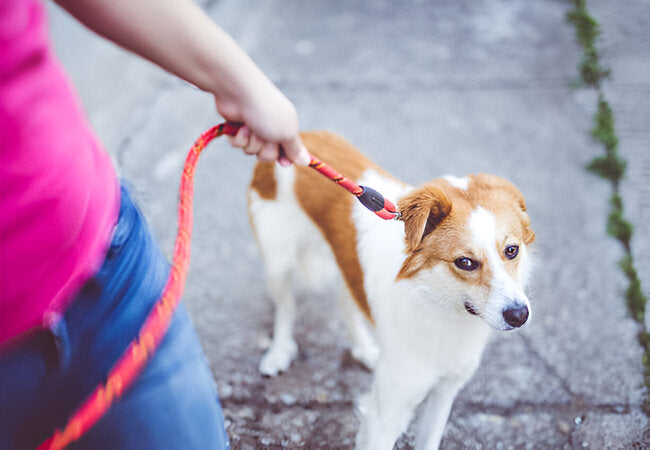How to Stop Your Dog from Pulling on the Leash—Vet Guide 2025 🐕

In this article
How to Stop Your Dog from Pulling on the Leash—Vet Guide 2025 🐕
By Dr. Duncan Houston BVSc
Walking should be joy, not tug-of-war! In 2025, experts continue to endorse positive reinforcement and structured walking games to teach polite leash manners. Let’s explore exactly how vets and trainers recommend eliminating pulling—with kindness, consistency, and confidence. 🐾
Why Do Dogs Pull? 🧠
Leash pulling often stems from excitement, lack of training, or frustration. Dogs see the leash as a pathway to adventure. Without clear guidance and engaging interaction, they default to rushing forward. Also, collars (especially flat collars) can strain the neck and encourage pulling, while harnesses offer safer alternatives.
1. Mindset Shift: Teach Walking, Not “Stop Pulling”
- Focus on teaching what you want (walking beside you) rather than what you don’t (pulling).
- Think of yourself as a guide, rewarding focus and proximity.
- Arm yourself with high-value treats—tiny pieces of chicken or kibble—to keep attention high.
2. The “Follow Me” Game 🎮
A fun, interactive drill:
- Hold your leash and take a few steps backward.
- When your dog turns to follow, mark (“Yes!” or a click), offer a treat.
- Repeat 8–12 times, changing direction and distance.
- Your dog quickly learns that paying attention gets rewards.
3. Integrating Praise into Real Walks
During walks, the moment your dog looks at you or stays near your side, celebrate:
- Mark and reward immediately (every 4–5 steps in early training).
- Slowly fade treat frequency, keeping praise but making it intermittent.
4. Gear That Supports Success
Choosing the right gear makes a big difference:
- Front-clip, no-pull harness: redirects forward momentum and eases control.
- Head halter (Gentle Leader-style): offers steering but requires proper fitting and introduction.
- Always avoid choke or prong collars—harsh tools can harm neck tissues and worsen behavior.
5. Reinforcement & Training Consistency
Consistency is key:
- Always reward good walking—no exceptions.
- Ensure everyone in the household follows the same rules.
- Short, daily 5–10 minute sessions can reprogram behavior faster than inconsistent longer walks.
6. What to Do When Pulling Happens
Don’t yank or punish. Instead:
- Stop walking the moment the dog pulls.
- Stand still or turn around. Wait until Slack returns.
- Mark the release and begin again—this reinforces that slack = forward movement.
7. Practice, Patience & Progress Tracking
- Log sessions: note how often you rewarded, improvements seen.
- Mark milestones: 30 steps without pull, two minutes calm, etc.
- Celebrate successes—both yours and your dog’s!
8. When to Seek Professional Help
If pulling persists due to reactivity or high energy, a certified positive-reinforcement trainer can tailor strategies. A vet behavior consult can help if anxiety or frustration drives the pulling.
9. Bonus Game: Change of Pace!
During walks, suddenly change direction or stop, mark when your dog follows. This keeps them focused and responsive.
10. Empowering Tools from Ask A Vet, Woopf & Purrz 🧡
🔹 Download the Ask A Vet app to access:
- Walk-focused training plans
- Progress logging and reminders
- Reward and gear recommendations: Woopf’s treat pouch, Purrz harnesses
FAQs 💬
• My dog is a strong puller—will harnesses manage it?
Yes. A front-clip no-pull harness provides physical control and reduces strain—but combining it with training is essential.
• Should I use a head halter?
They can be effective when fitted and introduced slowly, but some dogs resist them. Always pair with a positive reward and proper acclimation.
• How long until I see a change?
Many dogs respond within 1–2 weeks of consistent short sessions. Full leash manners take 4–8 weeks of practice.
• My dog pulls excitedly—can I ignore and walk on?
Stopping or changing direction each time they pull teaches them that pulling stops the walk—a clear consequence reinforcing slack-leash behavior.
Conclusion ❤️
Leash pulling isn’t a permanent problem—it’s a behavior you can reshape with kindness, consistency, and rewarding guidance. In 2025, with the right mindset, structured games, secure gear, and tools from Ask A Vet, Woopf, and Purrz, each walk can become a calm and joyful routine. Start small, stay consistent, and enjoy the journey together. 🐾
Need help? Visit AskAVet.com and download the Ask A Vet app for personalized training support anytime.






